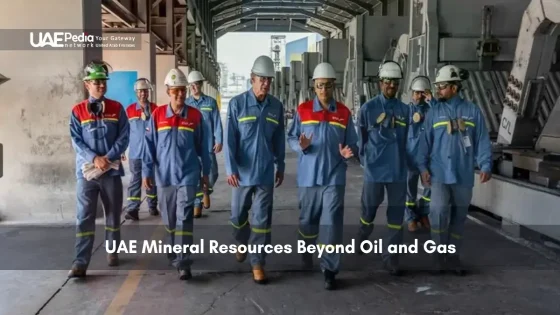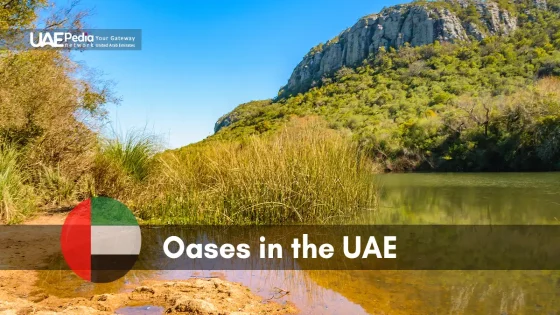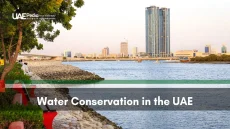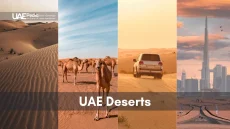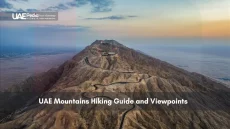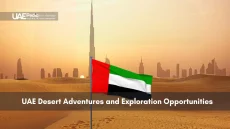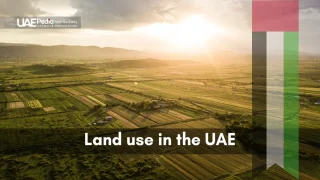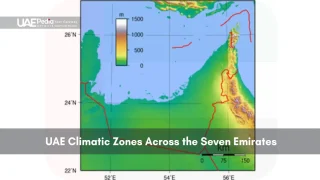What if the world’s sixth-largest oil reserves were just the tip of the economic iceberg? The Arab Emirates pumps 3.2 million barrels of crude daily—enough to fill 50 Olympic pools—but its real story lies beneath the dunes and desert sun. From gypsum-rich mountains fueling global construction to solar farms stretching like mirrored carpets, this region quietly reshapes how nations harness natural wealth.
Abu Dhabi anchors 94% of the country’s 97.8 billion-barrel oil stash, yet innovation thrives beyond fossil fuels. Projects like Noor Abu Dhabi—one of Earth’s largest solar plants—convert relentless sunshine into gigawatts, while partnerships in lithium refining hint at electric ambitions. Even traditional sectors evolve: natural gas production now feeds 5.7 billion cubic feet daily into global markets, balancing energy needs with climate pledges.
We’ll explore how decades of strategic investment transformed sand into silicon and salt flats into supply chain hubs. You’ll discover:
- How solar parks and hydrogen hubs position the region as a clean energy trailblazer
- The role of gypsum and silica in fueling global construction booms
- Why tech-driven resource management attracts international partnerships
This isn’t just about what’s extracted—it’s about reinventing what resources mean for a post-carbon era. Let’s begin where the pipelines meet the solar panels.
Introduction: A Closer Look at UAE Mineral Resources
While oil flows through pipelines, another kind of wealth is carved from mountains and deserts. The nation’s economic engine runs on more than crude—it’s powered by strategic vision and diverse landscapes that feed global markets.
Economic and Strategic Importance
Abu Dhabi’s natural gas fields produce enough energy daily to power millions of homes. Clever agreements ensure these resources reach partners worldwide—like recent deals to double gas exports by 2030. Positioned at the heart of the Middle East, the country’s supply chain networks stretch from Asian markets to European ports.
Geological Diversity in the United Arab Emirates
The United Arab Emirates’ varied terrain makes it a geologist’s playground. Ras Al Khaimah’s gypsum-rich mountains supply global construction booms, while limestone deposits fuel cement factories. Copper veins in the Hajar Mountains quietly power tech manufacturing—proving deserts hold more than sand.
| Material | Location | Global Impact |
|---|---|---|
| Gypsum | Northern Emirates | 1.2 million tons exported annually |
| Limestone | Eastern Regions | Key for $4.3B construction projects |
| Copper | Hajar Mountains | Supplies regional tech hubs |
Renewable energy projects now bloom where minerals once slept—solar farms sharing space with ancient rock formations. This dual strategy balances tradition with tomorrow’s energy needs.
Petroleum Oil and Natural Gas: Fueling Economic Growth
Every sunrise here fuels both ancient trade routes and tomorrow’s energy markets. For decades, black gold coursing through desert pipelines has transformed arid landscapes into global economic powerhouses—and the story’s far from over.
Global Oil Production Impact
Pumping 3.2 million barrels daily gives this OPEC heavyweight serious sway. When production shifts here, gas pumps worldwide twitch. Recent moves to boost capacity by 1 million barrels through AI-driven drilling show how tradition meets tech:
- Crude exports stabilize 14% of global trade routes
- Strategic reserves buffer against price shocks
- Enhanced recovery techniques squeeze 70% from aging wells
Expanding Natural Gas Reserves and Projects
While oil grabs headlines, gas quietly fuels the next chapter. The Bab field’s sour gas project—among Earth’s trickiest energy puzzles—now delivers 1.5 billion cubic feet daily. New Ghasha field developments aim to double that by 2027.
| Project | Capacity | Tech Innovation |
|---|---|---|
| Bab Gas Field | 1.5B cu ft/day | AI corrosion sensors |
| Ghasha Ultra-Sour | 3B cu ft/day* | Carbon capture systems |
| Dalma Gas Hub | 500M cu ft/day | Robotic pipeline inspectors |
*Projected 2027 output
Smart grids now balance domestic needs with Asian export contracts. As one energy strategist put it: “We’re not just selling molecules—we’re engineering energy ecosystems.” From drilling rigs to LNG tankers, every link in the chain gets smarter by the year.
Unlocking Hidden Minerals: Gypsum, Copper, and Limestone
Beneath the shimmering skyscrapers lies a quieter revolution—one where bulldozers dance with geology. Three unsung heroes fuel this transformation: gypsum’s paper-thin sheets, copper’s conductive veins, and limestone’s ancient backbone.
Industrial Applications and Construction Demand
Gypsum production hits 12 million tons annually—enough to drywall every new Dubai apartment twice. Northern quarries work round-the-clock, their chalky bounty shipped to cement factories and plasterboard plants. “This isn’t just powder,” says a site manager at RAK Minerals. “It’s the skin of cities.”
Copper’s comeback story unfolds in Hatta’s hills. New deposits now feed tech factories crafting circuit boards and solar panel wiring. Meanwhile, limestone’s steady crunch underpins mega-projects:
- Palm Jebel Ali’s artificial islands use 8 million tons annually
- Abu Dhabi’s Louvre Museum walls showcase precision-cut stone
- Hyperloop test tracks rely on ultra-smooth concrete blends
Smart logistics slash shipping times to Asian markets—raw materials become finished products before the desert sand settles on loading docks. Construction firms report 18% faster project timelines thanks to local mineral sourcing.
This strategic shift turns quarries into quality control hubs. As one engineer notes: “We’re not just digging dirt. We’re building cities from the ground up—literally.” From subway tunnels to wind turbine bases, these hidden treasures prove deserts hold more than mirages.
Solar Energy and Renewable Innovations
Imagine a future where endless sunlight powers entire cities—no oil rigs in sight. That vision unfolds daily across sun-baked landscapes, where photovoltaic panels now outnumber palm trees. The nation’s energy playbook has flipped: solar parks covering 16 square miles generate gigawatts, while engineers tweak algorithms to squeeze more juice from every sunbeam.
Megaprojects Driving Clean Energy Initiatives
Noor Abu Dhabi’s 3.2 million panels—visible from space—power 90,000 homes while setting records. Nearby, Dubai’s Mohammed bin Rashid Solar Park grows like a tech-savvy oasis, its latest phase adding 950MW using floating panels that follow the sun. These titans share three secrets:
- AI-powered cleaning bots that boost efficiency by 15%
- Battery farms storing daylight for moonlit Netflix binges
- Hybrid systems blending solar with wind for 24/7 output
One engineer grinned: “We’re basically farming photons now. Who needs tractors when you’ve got trackers?”
Vision for 2050 Clean Energy Goals
By mid-century, half the grid will hum with renewables—a target baked into every new project. The strategic roadmap pairs solar expansion with green hydrogen plants, turning excess sunshine into exportable fuel. Carbon emissions? Down 70% since 2020, thanks to tech like:
- Perovskite solar cells (30% cheaper, 20% more efficient)
- Smart grids rerouting power during sandstorms
- Recyclable panel materials cutting waste by 40%
As climate challenges grow, these innovations prove clean energy isn’t just possible—it’s profitable. Tomorrow’s skyline? Think shimmering solar glass towers feeding driverless cars. Your move, fossil fuels.
Mining Strategies and Defence: Securing Global Supply Chains
While drone fleets patrol skies, another kind of security operation unfolds in boardrooms and mine shafts. Strategic moves across continents now lock down materials powering everything from smartphones to missile systems—a chess game where supply chains become battle lines.
Global Mining Deals and Acquisitions
Last year’s $2.1 billion grab for Zambia’s copper belt wasn’t just business—it was blueprint. Emirati firms now control cobalt flows from Congo and lithium routes through Argentina. These deals share three rules: secure dual-use metals, partner with local governments, and always own the processing plants.
Saudi Arabia emerges as a key ally here. Joint ventures like the $800 million rare earths project near Neom blend Gulf capital with African deposits. “We’re not buying rocks,” says an EDGE Group strategist. “We’re engineering immunity to supply shocks.”
Dual-Use Technologies and Security Implications
That smartphone in your pocket? Its gallium comes from mines guarded by AI drones developed for desert warfare. EDGE’s recent mining bots—originally designed for urban combat—now map Chilean copper veins 3x faster than human crews.
Five defense-tech crossover hits:
- Satellite mineral scanners repurposed from missile guidance systems
- Blockchain trackers preventing “conflict mineral” leaks
- EMP-shielded data centers at remote mining sites
As one security expert notes: “Controlling the chain from shovel to smartphone isn’t strategy—it’s survival.” With 63% of defense-sector materials now sourced through these guarded networks, the line between minefield and battlefield keeps blurring.
Final Insights: UAE’s Sustainable Resource Future
Where desert sands meet server farms, the United Arab Emirates crafts tomorrow’s economy. This nation’s playbook blends time-tested energy giants with sunrise industries—like mixing traditional Arabic coffee with a futuristic twist. Here’s the twist: oil rigs now share desert horizons with solar arrays, while copper mines fund AI-driven climate solutions.
Abu Dhabi leads this symphony of old and new. Gas production fuels today’s exports, but 3D mapping initiatives quietly map underground treasures for green industries. Think of it as a recipe—1 part heritage energy wisdom, 2 parts tech innovation, baked in global partnerships.
The results? Supply chains stretching from Middle Eastern quarries to Silicon Valley labs. Copper becomes circuit boards. Sunlight morphs into hydrogen fuel. Even defense tech guards mineral shipments—robotic sentries ensuring materials flow smoother than falcon in flight.
“We’re not choosing between past and future,” says a Dubai-based engineer. “We’re building bridges—literally and figuratively.” With climate commitments driving 70% emission cuts and trade deals securing rare earth metals, the country’s strategy proves adaptability is the ultimate resource.
Tomorrow’s challenges? They look like opportunities here. As global markets shift, the United Arab Emirates keeps one foot in proven energy sectors and another in uncharted territories—always ready to pivot, always charging ahead.
By investing in minerals like gypsum for construction and copper for tech manufacturing, the Emirates is building industrial resilience. Projects like Al Dhafra’s solar farm and limestone exports reduce reliance on crude oil while aligning with global clean energy trends.
Solar megaprojects—such as the Mohammed bin Rashid Al Maktoum Solar Park—anchor the nation’s goal to generate 50% clean energy by 2050. Innovations like floating solar plants and hydrogen hubs also position the Emirates as a renewable tech leader in the Gulf.
Agreements with resource-rich nations like Zambia (for cobalt) and the DRC (copper) ensure stable supply chains for batteries and renewables. These partnerships hedge against market volatility while supporting Abu Dhabi’s vision for tech-driven, post-oil industries.
ADNOC’s 8 billion push to expand gas production by 2030 bridges the gap between oil dependency and renewables. Liquefied natural gas (LNG) exports meet global demand while funding investments in carbon capture and hydrogen research.
Gypsum from RAK’s mountains fuels cement production for projects like Dubai Creek Tower. Limestone quarries in Fujairah supply raw materials for infrastructure, while recycled copper supports smart city wiring and EV charging networks.
Through initiatives like the Barakah Nuclear Plant and green aluminum smelters, the Emirates pairs resource trade with carbon-neutral tech. Export revenues fund solar parks and desalination upgrades, creating a closed-loop sustainability model.
